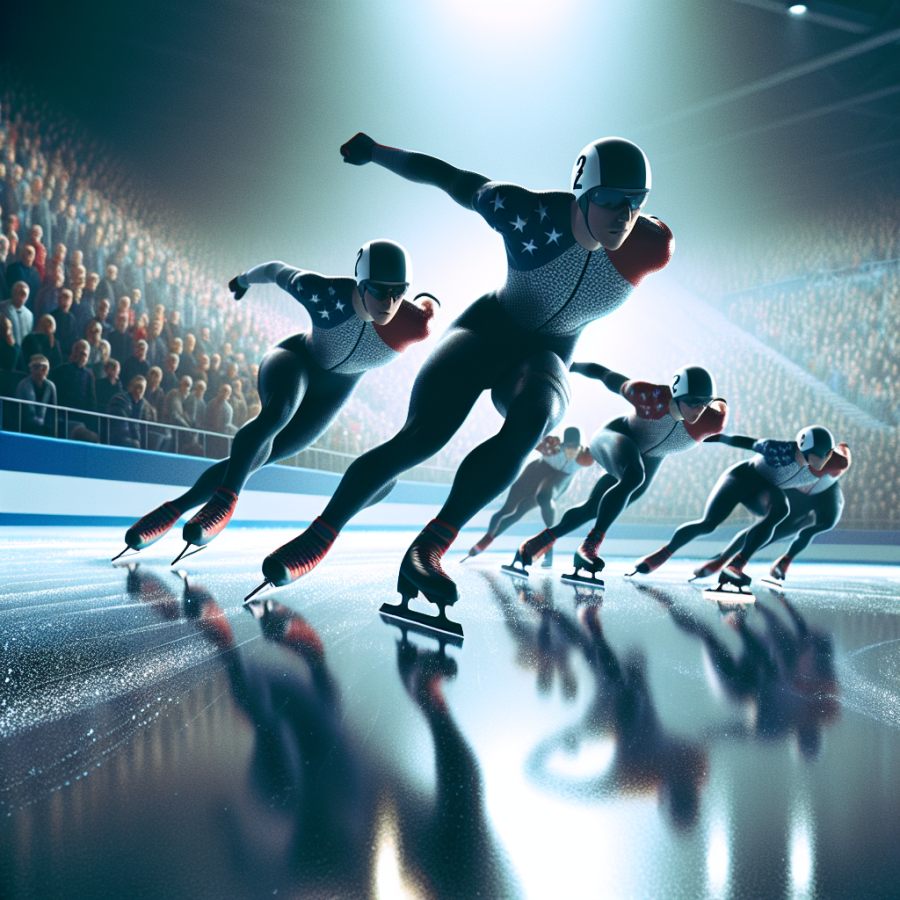Adrenaline and Strategy: The High-Stakes World of Short Track Races
In the electrifying realm of short track speed skating, the combination of high speeds and tight corners creates an adrenaline-pumping spectacle that keeps audiences on the edge of their seats. This intense sport demands not only incredible physical skill but also a sharp strategic mind, as racers navigate through a blend of raw power and cunning maneuvers on the ice.
Athletes in this sport are known for their explosive starts; a split-second delay off the line can be the difference between victory and defeat. The sound of the starting gun sends a surge of adrenaline through their veins as skaters push off with maximum force, reaching speeds that can exceed 30 miles per hour on a track merely 111.12 meters in circumference. The proximity of the competitors amplifies the thrill—elbows almost touch, and blades often clash, as skaters vie for the best position.
But it’s not solely about the speed. Strategy plays a pivotal role. Skaters must be mindful of their energy reserves, knowing when to hold back and when to unleash their full power. Positioning is key; being at the front too early can turn a racer into a target, with everyone drafting behind to conserve energy before attempting a slingshot pass in the race's closing laps.
Passing itself is an art form. With limited space and time, skaters look for the smallest of openings to execute a move—a misjudged attempt can lead to a penalty, or worse, a fall involving multiple athletes. Choosing the right moment requires split-second decision-making while racing at high speeds and on a razor’s edge between control and chaos.
In addition, teamwork often comes into play, even though short track speed skating is largely an individual pursuit. In team-dominated events, competitors collaborate with their fellow countrymen, using hand signals and predetermined strategies to decide who will take the lead and how they will outsmart other teams.
Training off the ice is as crucial as the time spent on it. Skaters spend countless hours working on their starts, mastering their technique, and strategizing with coaches to analyze opponents' strengths and weaknesses. Mental preparation includes visualizing the race, staying focused amidst the cacophony of the crowd and the intensity of competition, and managing the psychological stress that comes with high-stakes racing.
The blend of adrenaline and strategy in short track speed skating makes it a unique and fascinating sport, offering an intricate dance between racers where every decision is critical and every second counts.
Read also:
Mastering Vertical Limits: The Ultimate Guide to Rock Climbing
Navigating the Turns: The Essence of Short Track Precision
Short track speed skating, a sport of agility, strategy, and raw speed, requires athletes to display extraordinary precision as they navigate the intricate turns of the ice oval. Unlike long track speed skating, where skaters have their own lane, short track involves a pack of skaters jostling for position on a much tighter track. Each turn becomes a high-stakes ballet, where the most minute miscalculation can be the difference between victory and a potentially race-ending fall.
The essence of precision in short track lies in mastering the physics of the turn. Skaters reach angles where their bodies are nearly parallel to the ice, all while maintaining high speeds and preparing to exit the curve with enough momentum to propel them down the straightaway. Precision in the turn is not just about the perfect arc; skaters must be acutely aware of their competitors, ready to adjust their trajectory at a moment's notice to avoid collisions and capitalize on slipstreams.
Edge control is paramount. The slightest over or under-rotation on the blade's edge can result in a loss of control or speed. Skaters work tirelessly on drills to enhance their edge work, training muscles to hold the demanding positions needed to execute each turn flawlessly. The boots and blades of short track skates are specially designed to aid in this, allowing a deeper bend and a tighter radius while maintaining speed and stability.
The concentration and mental precision required during these turns are exhaustive. Short track skaters not only have to be in top physical form but also mentally sharp, able to make split-second decisions that could lead to overtaking an opponent or successfully defending their position. This mental aspect often separates the good from the great in short track, as maintaining focus through the chaos of a race is crucial.
Moreover, the coaching strategy plays a critical role in precision on the short track. Coaches need to emphasize the importance of technique while also instilling tactics that can help a skater take advantage of their competitors' weaknesses, especially in the turns. This may include instructions on pacing, when to accelerate out of a turn, or how to best position oneself before entering the turn to gain an optimal place in the pack.
Practice is relentless for short track skaters, with numerous hours dedicated to perfecting their skills in the turns. They repeat these maneuvers to the point of muscle memory, so when race day arrives, the precision of their turns appears effortless.




